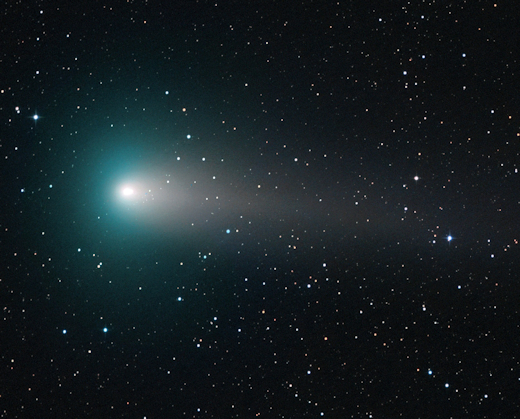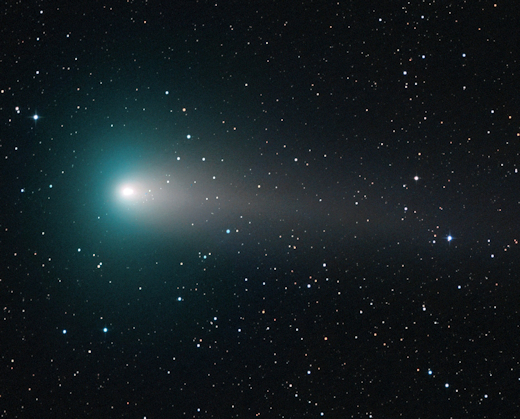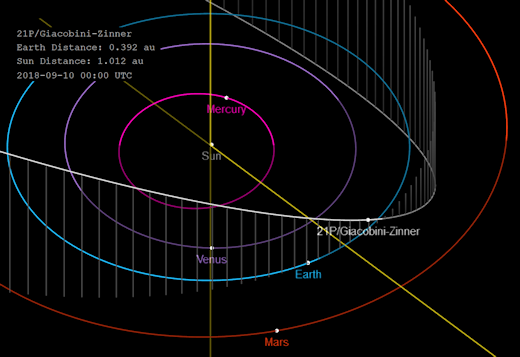Comet 21P/Giacobini-Zinner is approaching Earth. On Sept. 10th, it will be 0.39 AU (58 million km) from our planet and almost bright enough to see with the naked eye. Already it is an easy target for backyard telescopes. Last night, Michael Jäger of Weißenkirchen, Austria, caught the 7.7th magnitude comet passing through star cluster Tombaugh
Comet 21P/Giacobini-Zinner is approaching Earth. On Sept. 10th, it will be 0.39 AU (58 million km) from our planet and almost bright enough to see with the naked eye. Already it is an easy target for backyard telescopes. Last night, Michael Jäger of Weißenkirchen, Austria, caught the 7.7th magnitude comet passing through star cluster Tombaugh 5 in the constellation Camelopardalis:
This comet is relatively small–its nucleus is barely more than a mile in diameter–but it is bright and active, and a frequent visitor to the inner solar system as it orbits the sun once every 6.6 years. On Sept. 10th, 21P/Giacobini-Zinner will not only be near Earth, but also at perihelion, its closest approach to the sun. Solar heating will make it shine like a star of 6th to 7th magnitude, just below the threshold of naked-eye visibility and well within range of common binoculars. Detailed sky maps will help you find it.
21P/Giacobini-Zinner is the parent of the annual Draconid meteor shower, a bursty display that typically peaks on Oct. 8th. Will the shower will be extra-good this year? Maybe. Draconid outbursts do tend to occur in years near the comet’s close approach to the sun. However, not every close approach brings a meteor shower. Forecasters say there are no known Draconid debris streams squarely crossing Earth’s path this year, so we will have to wait and see.
Note: “AU” means “astronomical unit.” 1 AU is the distance between Earth and the sun. The distance to Comet 21P/Giacobini-Zinner on Sept. 10th will be ~0.39 AU or 58 million km. On the scale of things in the solar system, the comet will be close to Earth, but not scary-close.
Interactive map: JPL.NASA
Source: Spaceweather.com



































Leave a Comment
You must be logged in to post a comment.